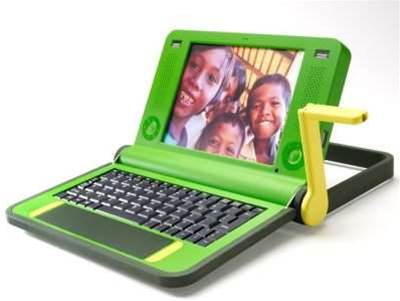
Most notably, the project is looking for ways to sell the notebook computers to individuals.
"We are looking at ways to make the laptops available to the developed world in a way that subsidises the developing world. But we haven't got a solution to that yet," Michail Bletsas, the project's chief connectivity officer, said in a meeting with reporters during the Consumer Electronics Show in Las Vegas.
Consumer sales pose a new challenge for the project, he warned, as the distribution, marketing and support costs would about double the price of the device.
Bletsas claimed that "more than a third" of every board meeting is dedicated to exploring commercial sales of the laptops.
The OLPC has produced multiple technology innovations that could appeal to users beyond its target audience of children in developing nations.
The educational project has developed a notebook computer to provide children in developing economies with internet access and allow them to educate themselves.
Potenco, a company spun-off from the project, has engineered the laptop's yo-yo shaped power generator that allows children to recharge the unit's battery.
Because it is designed to adjust automatically to the load that the user puts on it, the generator promises to recharge portable devices much faster. "We think this is going to charge a cellphone in about five minutes," said Bletsas.
The generator costs about US$10 to build. Retail prices typically have a 100 to 200 percent mark-up over manufacturing costs to cover marketing, distribution and profit.
The project also expects the notebooks to appeal to consumers because of their low power use and dual-mode display that allows the computer to operate in a backlit mode in the dark, and a reflective screen mode in direct sunlight.
The laptop's designers engineered a special chip that allows the processor to power down while the screen remains switched on. This so-called 'e-book mode' consumes only 1W of power, or slightly less than 2W with the backlight on.
It allows children to read digital documents with a minimum strain on the notebook's battery.
Even when running at full force, the system will consume between 11W and 12W of power, in part because it lacks any moving parts such as hard drive or DVD player. Mainstream notebooks typically consume up to 90W.

.png&h=140&w=231&c=1&s=0)


_(20).jpg&h=140&w=231&c=1&s=0)





 iTnews Executive Retreat - Security Leaders Edition
iTnews Executive Retreat - Security Leaders Edition











_(1).jpg&h=140&w=231&c=1&s=0)



